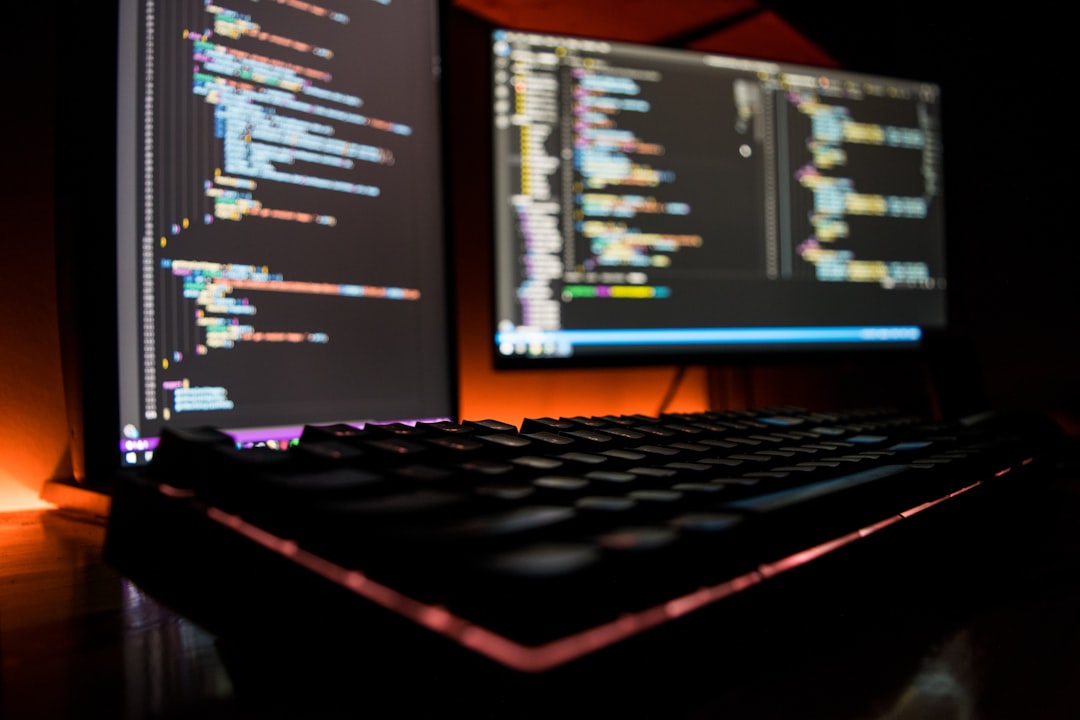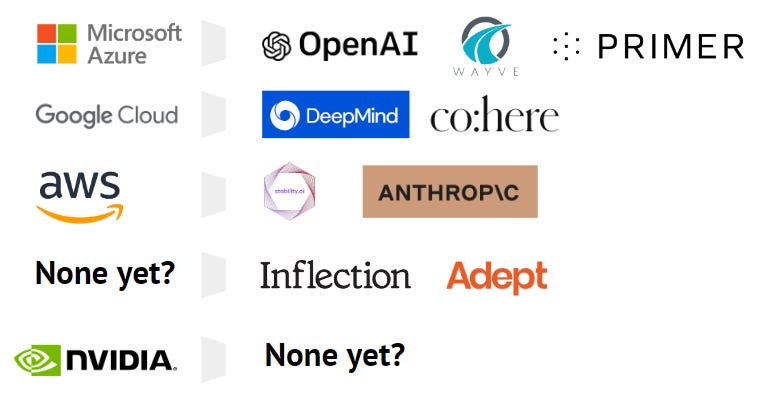
Hey Guys,
I’ve been hearing yet a new hype-trend, and it’s called “Software 3.0”. But what is it?
As the Cloud and the Modern Data Stack evolves even with GitHub Copilot type AI buddies for software development folk, it makes me wonder. Is software really evolving too? Is Generative-AI or no-code platforms part of the Software 3.0 movement?
One explanation of what Software 3.0 is goes thus: As computing and storage have grown cheaper and digitization has become ubiquitous, enterprises are creating ever-increasing amounts of digital data. The availability of this data, and of cost-effective ways to process it, has led to the emergence of enterprise AI systems, or “Software 3.0”.
But rather, I think we can safely say Generative AI itself heralds the beginning of Software 3.0. I think it resembles all of these newer movements like RPA, no-code platforms, the MDS and the era of Databricks and Snowflake. Software 3.0 also is reshaping how innovation occurs in machine learning.
It’s not all about massive Enterprise trends around data science or consumer apps for machine learning. Another thing that is occurring is AI Labs are parenting with a BigTech parent company. Think Microsoft and OpenAI.
These AI Labs that sometimes start out as non-profits become innovation Labs inside and working side-by-side these massive Enterprise companies.
These compute partnerships and trend for more decentralized organizations bringing academic ideas to fruition is part of the Software 3.0 trend. There’s also far more global cooperation and accessibility to Transformers and LLMs and software learning material than ever before.
Software 3.0 can therefore be a metaphor for the new trends in A.I. and software engineering that relate to our improved technological capabilities as compared to say, around ten years ago. Venture Capitalists also uses Software 3.0 as a kind of new-wave for the newer trends in A.I. I’ve been combing the State of A.I. Report 2022 for insights into what these might be.
In Software 3.0 compute is scaling well.
In a gold rush for compute, companies build bigger than national supercomputers
Think about the Supercomputers for a moment:
Companies like Meta and Tesla seem to think that these machines can give them a competitive advantage in things like the Metaverse or Autonomous vehicles. That remains to be seen.
Software 3.0 in a sense represents a different paradigm:
Software 3.0 businesses create value for customers not by producing software code alone, but composite systems comprising code and data. In this phase, customers and vendors have a symbiotic relationship
Just like Web 3.0 is supposed to be another paradigm, in fact we are likely closer to Software 3.0 just since the rate of technological change is faster while Web 3.0 requires certain institutional, leadership, regulatory and other kinds of changes that are far slower.
Software 3.0 vendors leverage customer data to train their proprietary ML models and tune product experiences, while customers receive added value from the vendor through data network effects arising from the vendor’s customer base. This symbiotic relationship sets up equitable risk- and reward-sharing between the customer and the vendor, but also requires a period of investment from both sides before the full rewards of this model can be reaped.
I would actually suggest the Software 3.0 era begins circa 2024. A nascent period where new kinds of work is being done that more approximates the road to AGI and A.I. more actively involved in software development and more maturity of the low-code and RPA sectors.
It’s nice to talk about the future or hype A.I. or assume software is itself evolving quickly, but the future always takes more time to arrive than we thought. This can be seen with chatbots, VR, self-driving cars and basically any other hype cycle trend like blockchain, quantum computing or human level A.I. (HLAI).
I do think however that it’s useful to define what characteristics and trends Software 3.0 might encompass. If we are to be a data-based society we need to continue to refine our processes of data science, data engineering and MLOps.
The most important way in which Software 3.0 differs from previous phases of evolution in the software industry is its dependency on data. Advanced ML techniques, including deep neural networks, lie at the heart of enterprise AI businesses. These models are trained using sample data points from the relevant problem domain then are deployed into production, where they make decisions for business use.
If we are to say that autonomous vehicles are part of a Software 3.0 native world, then the current broken state of things for self-driving cars doesn’t suggest that we have yet reached the Software 3.0 era. For as good as the MDS is, it still needs a few years to refine itself even as the likes of Snowflake and Databricks continue to mature and all the other related companies, for example.
Venture Capitals enjoying hopping on a band-wagon too. Sarah Guo announced that she raised $101 million for her new fund called “Conviction”, to back companies that are building artificial intelligence and what she describes as software 3.0. I didn’t happen to see any active mention of “Software 3.0” in her blog. I do wish Venture Capitalists had really good content, that made me want to believe in their vision.
You could mine a16z’s Future blog and find some things that resemble Software 3.0, without explicitly defining the new paradigm in this light of datascience, machine learning and software development. Perhaps the hype around Robotic Process Automation comes the closest. I have noticed as well that Robotics is becoming more mainstream in 2022 with more startups and papers working on the problems. Even as FedEx and Amazon have proved that last mile delivery robots aren’t ready for the consumer world yet.
Software 3.0 therefore isn’t just about software, but a world more permeated by A.I. and data engineering. The evolution of MLOps is clearly important in this trend. While a16z’s Future media focuses on less than stellar in terms of realism trends like NFTs, I wish they focused more on core-A.I. hype trends that don’t simply go away anytime there is a crypto winter. So much content about Web 3.0, with so little grounding in reality.
Curiously we do find decentralized orgs have an advantage in the kind of work Software 3.0 era requires.
Meta concluded that “while the centralized nature of the [AI] organization gave us leverage in some areas it also made it a challenge to integrate as deeply as we would hope.”
These new decentralized A.I. organizations are part of the Software 3.0 trend.
These clusters are therefore Software 3.0 native, think about it:
Here is the one for DeepMind (Source: State of AI Report 2022)
We are a new trajectory for more decentralized A.I. Labs that can innovate faster. This is a component of Software 3.0 where we are actually doing something better.
So what is the new breed? It’s still too soon to say, but their ideas and ideology are BIG:
A Software 3.0 vendor has a lot riding on their earliest customers because there is a sustained period of co-creation, data cleansing, and model customization to which the customer will need to dedicate meaningful internal resources.
In Software 3.0 from one perspective, there’s more iterations of the product that’s customer-centric and trust-based. Think of Tesla experimenting with FSD, it isn’t quite there yet but people still pay for it, why is that? Is it just because they like Elon Musk? No they believe that their data will help build the product, even if they over-estimate the level of autonomy Tesla’s FSD itself provides (which is quite dangerous by the way).
The Advent of A.I. Coding Assistants
While also nascent, these coding buddies are also Software 3.0 native, and they imply more productive software development cycles with more peak productive hours for software engineers.
For instance if GitHub Copilot turns out to be a bust, there are other potential winners here: OpenAI’s Codex quickly evolved from research (July 2021) to open commercialization (June 2022) with (Microsoft’s) GitHub Copilot now publicly available for $10/month or $100/year. Amazon followed suit by announcing CodeWhisperer in preview in June 2022. Google revealed that it was using an internal ML-powered code completion tool (so maybe in a few years in a browser IDE?). Meanwhile, with its 1M+ users, tabnine raised $15M, promising accurate multiline code completions.
tabnine
Amazon CodeWhisperer
Microsoft’s GitHub Copilot, etc…
There are actually dozens of Software 3.0 trends already improving themselves, but few reports spot them or outline their efficacy and path to product-market fit. I’m not sure what that is really. Even who the top MLops Platforms are for Enterprise is pretty open to debate. This is why I don’t think in 2022 we’ve entered the Software 3.0 era quiet yet, though there are signs of it out there.
For me another element of Software 3.0 is A.I. showing real ROI in big areas like Pharma and Healthcare. A.I. in drug development is showing a lot more potential, but it takes years to get more street cred in Big Pharma, although there are a lot of interesting startups involved in AI in drug development and it’s a lot about the speed to market. It saves time therefore it saves huge costs, and this is what healthcare needs by and large; it needs huge cost savings as the population gets older in developed countries especially in the 2030s, it’s literally a race against time.
What else might be considered part of the Software 3.0 paradigm?
A.I. in medical diagnosis
Prompt based Generative A.I. in text to speech, video, music and writing.
Task automation for example no-code and robotic process automation solutions
Increase in industrial and service robots per worker (ratio)
Smart automation involving IoT, green technology, 5 and 6G, satellite tech
Embedded communications: like Google’s new tech. Project Starline. (which is legit)
Evolution of LLMs, Transformers and Supercomputers
Interoperability advances in Web3
A.I. spinouts from top Universities (bleeding edge A.I. startups)
Software 3.0 isn’t Inevitable
With higher interest rates however Venture Capital and investments are noticeable slowed.
Private companies using AI are expected to raise 36% less money in 2022* vs. last year, but are still on track to exceed the 2020 level. This is comparable with the investment in all startups & scaleups worldwide.
Anyways guys I hope you have enjoyed my musings on Software 3.0, I will soon return to the more Data science data engineering based topics. But as a future watcher I’m also interested in the macro trends of the 2020s where so much is is apparently “nascent”.
Thanks for reading and if you want to support the channel or the price of a cup of coffee, it goes a long way.







